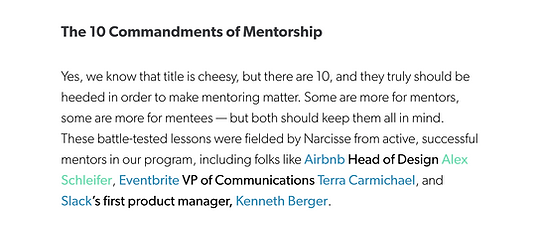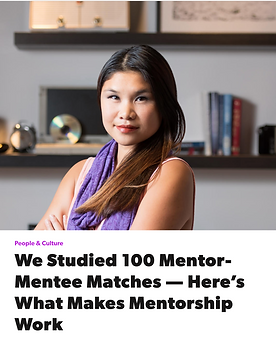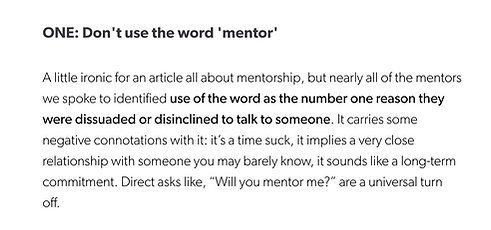
2ND ADDRESS
Connecting Hosts & Guests for Extended Stays into Furnished Homes
2ND ADDRESS
Connecting Hosts & Guests for Extended Stays into Furnished Homes
ZENTLY
Transforming Rental Living & Property Management
2ND ADDRESS
Connecting Hosts & Guests for Extended Stays into Furnished Homes
Make voice - video calls and send SMS through any devices
Make voice - video calls and send SMS through any devices
Make voice - video calls and send SMS through any devices





A platform for mentor and mentees to match, meet and motivate.

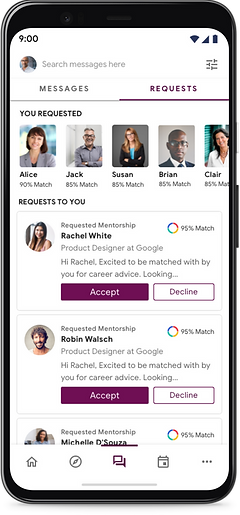
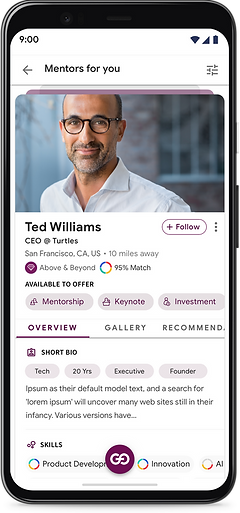
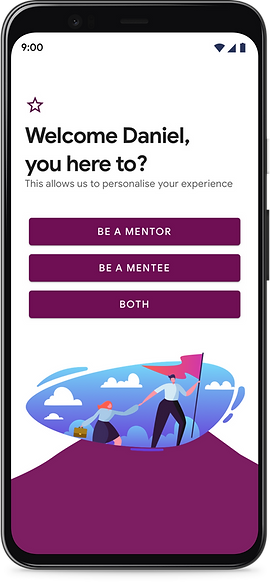
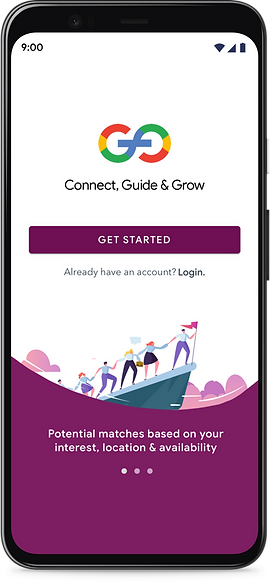
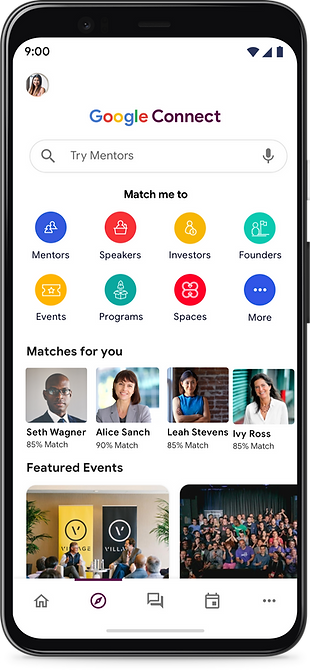

Overview of end-to-end Experience
Mentee Side after onboarding.
DESIGN PROCESS
How did I get there?
I approached the problem with human-centered design process
DISCOVERY
Empathize with Users, Understand Business, Competition
DEFINE
Reframing the Problem,
Deep insights & Prioritize
IDEATE
Crazy 8's , Solutions Sketches.
App Architecture
PROTOTYPE
User Flows, Wireframes,
Prototype, Mocks
TEST
Observe Users,
Get Feedback & Iterate
SET THE STAGE
Understand my goals, scope & constraints.
Before I start solving anything, it was important for me to set the stage - understand my goals, scope and constraints to do user research, competitive research, define the problem, opportunity & impact I was expecting.
It was important to establish good product foundation to design at the intersection of user, business, and technology.
Key questions I asked to myself:
-
Who will be the target user?
-
What are their goals, motivations, needs, pain-points.?
-
What's the context? What does the journey look like?
-
Where and how are they solving their problem now?
-
What are the constraints I have to deal with?
-
What will be the ultimate impact?



RESEARCH: START WITH THE USERS
Who will be target users?
Problem:
Who should I go talk to and know more? Who will be the users of the market place. For any marketplace having a good demand and supply is crucial for its growth and liquidity. One way to deal with problem is start with a niche segment where the chicken egg problem can be easily overcome, then eventually move to other niches & broader market using the bowling pin strategy. To overcome this chicken egg problem and to know whom should I go do user research with, I had to identify the "niche".
"You can design for everyone but you need to start somewhere when designing for platform-ecosystem."
https://stories.platformdesigntoolkit.com/launching-platforms-growth-hacking-network-effects-a38f8ad0458b
Exploration:
For purpose of this challenge, I quickly explored few "niches" of eco-system for whom i could design this mentorship platform: the k-12 students & educators, university students & educators, career development seekers and leaders, designers, entrepreneurs and investors.
Decision: Startup Ecosystem
StartUp eco-system is one of the niche's where I saw a massive potential where all- founders, investors, leaders, tech professionals were frustrated and saw many gaps in the system.
I made a quick hypothesis and validated this through lot of resources online
and found enough surveys that validated the need.

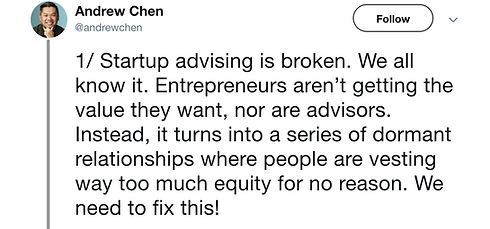



Diane Green, ex CEO, Google Cloud
COMPETITIVE RESEARCH
How are they meeting their needs now?
I began by exploring several websites & applications that provide some lightweight level of mentorship through networking while others that are build as strong mentorship programs especially with curated mentors. I kept my competitive analysis general and focused on features, functionality, main purpose, and tried to uncover if any of these solutions were meeting the needs I had discovered in my research.
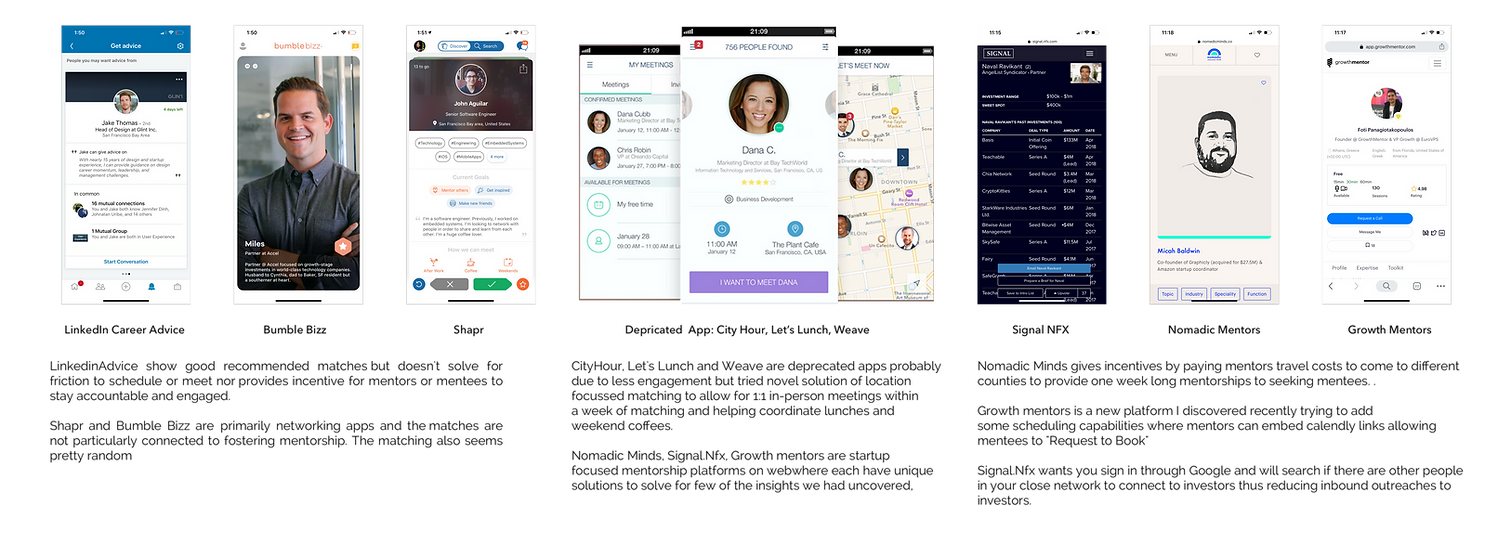

USER RESEARCH
Empathizing with mentors & mentees.
Knowing who will be the users of the platform, I decided to dive deeper into understanding the problem from user perspective. There is no better way to know the hopes, desires and pain-points of users than to empathize with them, understand them and talk to them. I created a questionnaire for different players in the eco-system who can be potential mentors and mentees. I inquired into their experiences with mentorship and more and conducted interviews with 10 people and quickly created personas defining their motivation and pain-points.
Participants were being asked the questions:
-
How did you connect with your mentor/ mentee? (approaches)
-
Did you encounter any difficulties when being a mentor/ mentee? (frustration)
-
What did you expect to gain from the experience? (mentor’s goals)
-
Have you ever ask someone for advice? What kind of question do you usually ask? (mentee’s goals)
-
What all attributes do you look for in a mentor or mentee.
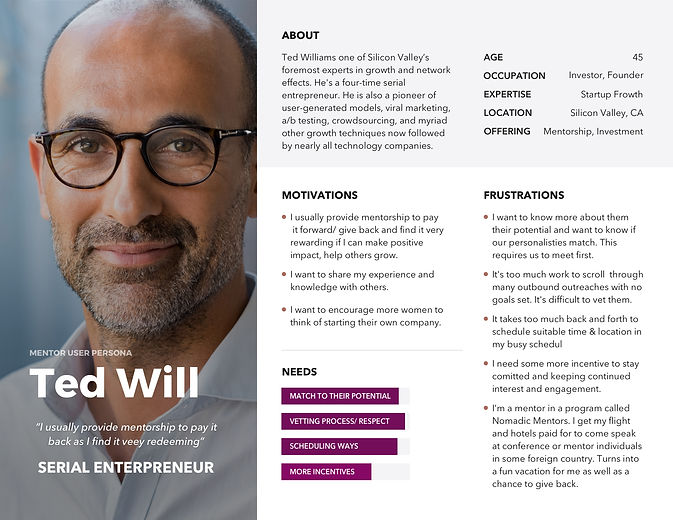
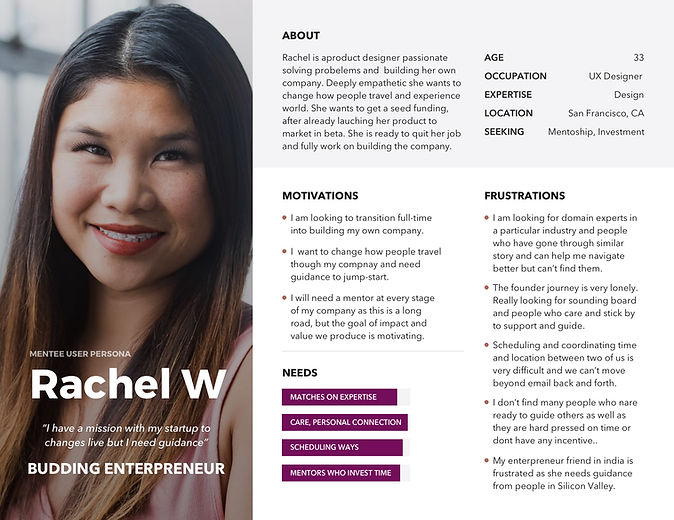
SYNTHESIS OF USER RESEARCH
Deep Insights: What the other half wants.
By looking at the affinity map I could group users - mentors & mentees pain points, motives, goals and frustrations. and needs into four focus areas:
1. Suitable Matches need more than interest, location and availability! Need to match to experience, subject-matter expertise, potential and personality before committing to an active mentorship.
2. Mentorship is a relationship based on respect and care. Mentors cannot be inundated with incoming requests with no purpose or intention set, both need to take ownership and accountability.
3. Friction to Schedule & Meet! Can't easily schedule time & location although they are close-by and need an easier way to schedule and meet.
4. Mentors have no Incentives other than redemption and slowly their motivation wears down. Barrier to participation results in supply constrained dynamic of Mentor/Mentee marketplace. Need more in incentive to stay engaged.
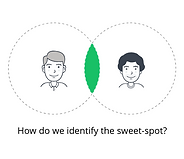

DEFINE & SCOPE
Pain Points & Opportunities along the journey
I stared mapping a mentee journey to map out all touch points, pain-points and opportunities and also decide where would I focus my design effort to.
DESIGN
Wireframing ++++++++++
At this point, I had a clear understanding of the features the app should contain, the actions Mentor & Mentee will take while using Google Connect, and how to best address and alleviate user pain points through design. I was able to start sketching the main user flow and several other ideas for various screens. My goal here was to visualize the user interface, user interactions and flow of the app.


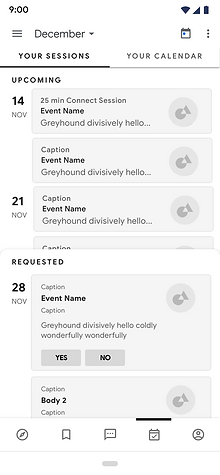
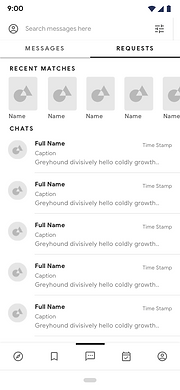

NAVIGATION DESIGN
Top Destinations & Design Decisions
I opted for bottom navigation with 5 Top-level destinations that need to be accessible from anywhere in the app from both the mentor and mentee perspective.
This went through various iterations as I added a Home Feed feature to bring more engagement to the platform as well and added follow button to the profiles moving away from Save.
-
Home feed Tab
-
Explore Tab
-
Messaging Tab
-
Calendar Tab
-
Profile Tab
-
More tab
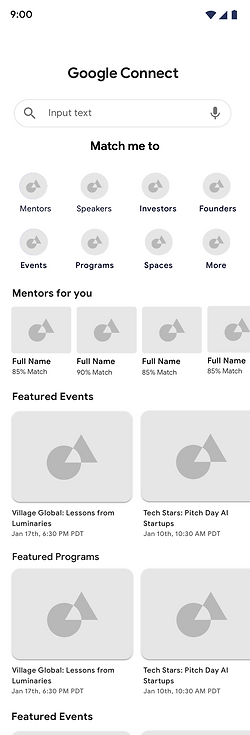



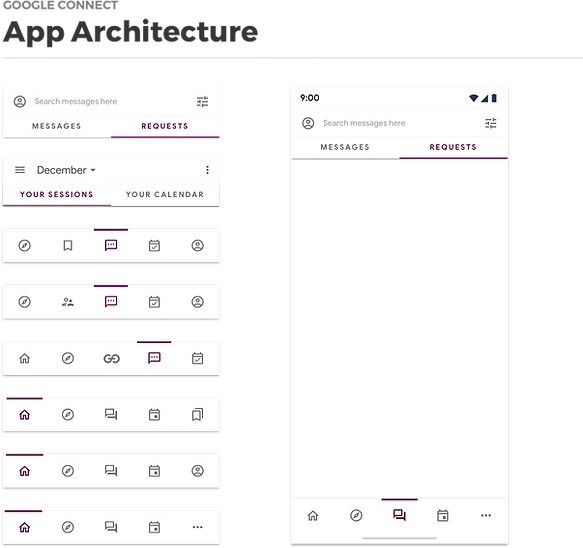
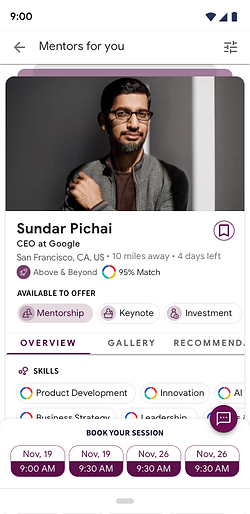
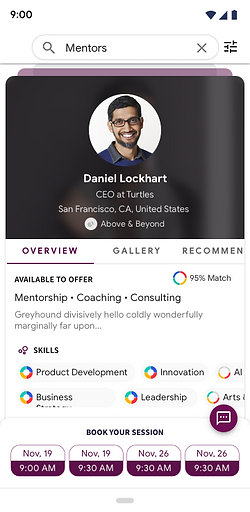
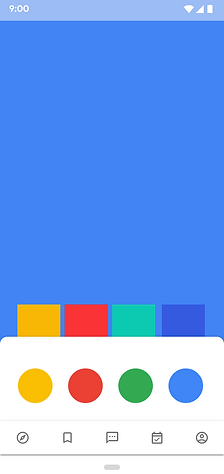
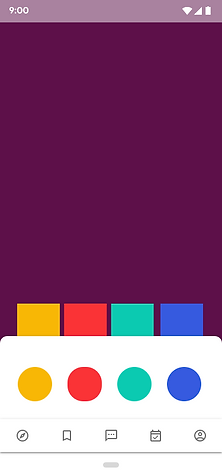
DESIGN
Brand Design+Design System+++++++++
At this point, I also started working on the design and brand language. I created this project using a Material design system library which I thematized to create a unique brand identity. Also the brief had mentioned to shy away from using Google identity in totality so I decided to expand it, so as to create a unique extension of it. I wanted the expression to be professional yet warm. The Plum color just did that.
Plum Color
I changed the needed components to form organisms without changing the atoms. I tried to Innovate only to creatively expand the brand and material library. I also was thinking of universality and accessibility as I was working through the project.
DESIGN
Interaction + Interface ++++++++++
Why Swipe-able Cards? Cards are a great tool for communicating quick stories and giving completely personalized experiences with an aggregation of many individual pieces of content that allows users to quickly scan and dismiss or send match requests to mentors. Only once they decide on the present card, will they proceed to next card and this also helps our platform to understand their choices better. over time.
Full Cover-Photo vs Profile Image with Blurred Cover ?
I did thorough usability testing on this with about 20 participants and found many participants inclining over small profile photo due to familiarity, but soon they grew over the big image and the skew was towards big image.
One user on usability testing told me the difference in these terms:
"I'm right here vs I am here in this small dark tunnel" Pics are small enough on a mobile device. The idea is to do person to personal connection, so the big image is more connective."
Appreciations and Endorsements.
With my research and basic behavior psychology, I resisted for mentees to give ratings, while they could give compliments of various category. Inspired by Uber, I can up with these categories - Above & Beyond, Expert Advice, All- Star Guide, Great Conversations.

PROTOTYPE + TEST
User feedback, iterate, refine
I did multiple rounds of guerrilla style user testing not only to check the usability but get more thorough nuances of users needs. How would like the visibility of their availability and how would they like a mentorship request or any request sent to them. They clearly indicated that a connection without a message of purpose is like getting a call from unknown number which you wouldn't pick up. A written purpose and ranked matches request would guide them in the vetting process. They also indicated that they would want control as to see who sees their availability.
I made quick changes to the interaction patterns on the swipe-able cards based on users behavior and mental-models. The users feedback also indicated that they would like to follow these people if not connect with them and absorb the rich content they post in the gallery.
DESIGN
Onboarding, Filtering and Profile View
While I was working on the core product user experience, I was in parallel doing multiple rounds of iterations on the onboarding. Figuring which data point would I get from Linkedin integration. if user chooses to don so. I was also trying to decide on what to ask users while onboarding or letting them go to their profile and made edits there. I had to map out all these data points to mentor preferences/filters mentee would be able to set. All this had to correspond to the their own profiles or the profiles mentees see for mentors.
Onboarding
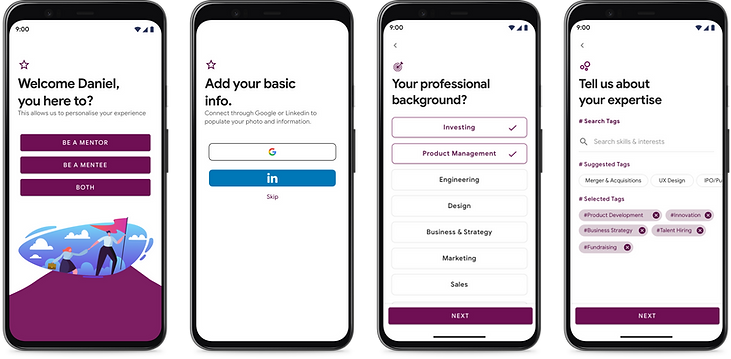

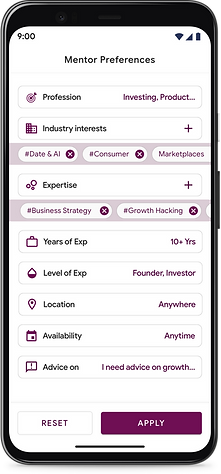
Filtering

Profile View
DESIGN
Visual Design
I also did some work on visual illustrations to define the what kind of tone and expression I wanted to create.
I explored few options and decided to keep the expression to be extremely
professional, respectful, motivating and inspiring.
I had also explored many brand names and stirred away from the word mentor as this platform was much more that that. Few names were
NorthStar, Wisely, Mastery, MentorWise, Got your Back, Google People.

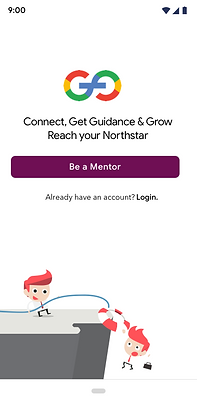
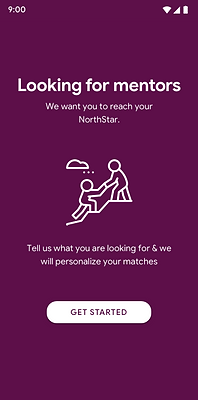
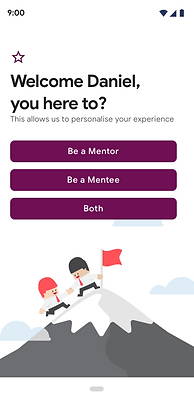
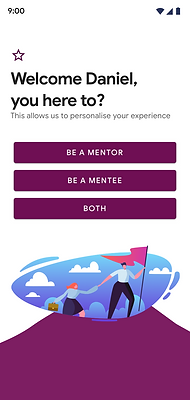

REDEFINE
Set Goals, Strategy, Principles & Success metrics
Once I had enough learnings from the research, all my opportunities mapped out, it was time to converge/focus. and define what is most critical for me to solve], what would it mean to have a "Minimum Viable-Desirable-Feasible Product". Typically I would to this with all my cross-functional partners so that we have a shared goal and prioritization.
I created a quick Risk-Value Matrix, and organized all the opportunities based on the end value of each and the risk involved, which helped me prioritize what to work on first.
With that the redefined challenge was for me was to:
Design an experience where prospective mentors and mentees can be matched on interest (expertise, experience), location and availability and also reduce the friction for them to meet and engage.
I also tried to identify what all I could leverage from the existing platform, what would be all the technical constraints
Before I could jump into designing, it was also important for me to define success for the UX I am designing for, which I typically do through Goal-Signal-Success Metrics Process.
I also created some design principles I would follow through my product to give a greater experience which were:
Make People Shine & Stand Out.
Help Build Bonds.
Respect, Guide & Motivate all.
DEFINING STATEMENTS FOR IDEATION
"How might we?"
Experience today is largely broken around mentor/mentee relationships and there are tons of missed opportunities for mentor/mentee relationships to work. However, there have been countless attempts at creating a basic marketplace for mentors/mentees that have all largely failed or remained fairly niche. So there remains continued opportunity here, but I will have to really tackle the roots of the problem which we discovered from insights.
-
How might we not only find matches based on interest, location & availability but also competence, potential & personality for both mentors and mentees.
-
How might we build a mentorship relationship based on respect, ownership and care while we as a caring platform also do the same to build trust.
-
How might we remove friction by weaving time and location for mentors and mentees to meet, match and build mentorship relationship?
-
How might we create mentor incentives for long-term commitment which keeps them stay engaged on platform and with mentees which results in a good supply of mentors?


IDEATE
+ What if Scenario's + Brainstorming++++++++++
Once I knew where to focus and had evocative "How might we" statements, I started the brainstorming process creating as many ideas as possible and running "What if scenarios" trying to solve these problems in hand and reimagine a new experience.
Typically I like these to be very collaborative co-creative sessions and want all my cross-functional partners, stakeholders, users to help ideate. The initial ideation process was not to design flows but the foundational system that powers and fuels the product and user experience.


I validated and triaged my ideas with this framework and finally landed with a hypothesis I could go with.
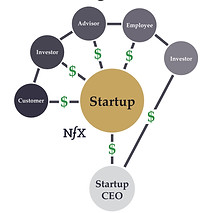

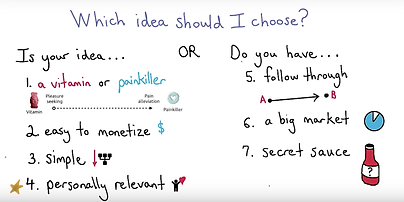
Market-Network Platform.
Solving for Demand-Supply- part marketplace, part network, part SaaS a network where every user can be part of system and use it to their value. It is neither just a social platform nor just a transactional platform but a platform for professional growth where people guide you. It allows users to offer many services like Keynote, Coaching, Investment, Host planning and gives users a tool to manage the workflow related to the offerings..
Personalized Matching based on Rich Profile/ Preferences/ Overtime Browsing Behavior
Google algorithm does potential matching based on keywords string match mentees used within their Mentor preferences land gives a Match Score Personalized Matching with Score. Also with all potential right and left swipes, the algorithms can learn more about your preferences over time, matches you look for with time and can give you more and more personalized result. "Match" score that aims to help connections based on your preferences.
First Conversation: Break the ice with 1-1 Video Session 25 min speedy sessions
Quickly swipe right to request for mentorship match to compare few & send chat message for their consideration or even better, just go request a One-on-One 20 minutes video session to break the ice and have initial conversation Simply for moments when you want a sounding board for quick advice book a session with any mentors who have viewable open slots.
Mentor builds a Brand: Get’s new opportunities & recognition
Incentive for mentors to go be keynote speaker, run workshops, provide mentorship within incubator, accelerator across the globe. Mentors get compliments, endorsements which increases their brand value and gets them new opportunities. eventually become formal advisor or get equity. both are looking for commitment and investment for long-term partnership into each other’s success story.
DESIGN
Sketching & Solution Ideas ++++++++++
Once I had ideated on the foundation of the platform I started creating Crazy 8 sketches, solution sketches storyboards and started converging on what ideas I want to go forward with.



DESIGN
User Flows & Loop Journey ++++++++++
Once I explored and converged on few solution ideas by creating a hypothesis, I started creating a user flow and journey map layered together from both mentor and mentee side. This really helped me to create a unified solution for both side of marketplace, allowing a user to be both mentor and mentee, but yet having a defined focus to what they want to achieve in each use scenario.
GOOGLE CONNECT
Project Overview
“A mentor is someone who allows you to see the hope inside yourself.” — Oprah Winfrey
“One of the greatest values of mentors is the ability to see ahead what others cannot see and to help them navigate a course to their destination.” — John C. Maxwell
Mentorship is all this and more. In our hyper-digital fast moving world it has become difficult to build this important relationship to seek professional guidance.
This project started with aim to design an experience for mentor and mentee to match based on interest, location, availability and evolved into much more. A platform dedicated to foster new way for mentors and mentees to match, meet one-on-one and motivate.
This case study provides the overview of my design process from problem definition to a designed solution, creating an end-to-end experience that enables mentorship in the start-up eco-system.
CLIENT
MY ROLE
Product Lead Designer
SPECIALITIES
UX Research
Vision & Product Strategy
Interaction Design
UI Design,
Visual Design
YEAR
2019

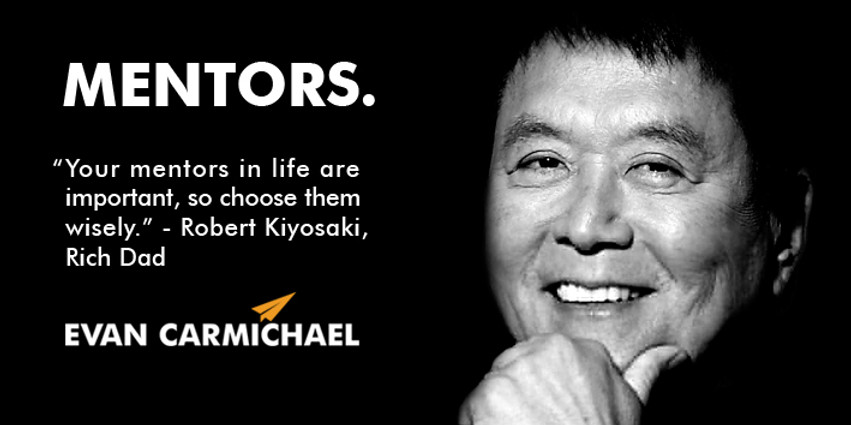
THE CHALLENGE/PROMPT
How do we match mentors to mentees?
Mentoring can be a great way to share knowledge and help someone be successful in their personal or professional life. But many potential mentors are often too busy to commit to regular meetings, or they have a hard time connecting with people seeking help.
Design an experience where prospective mentors and mentees can be matched, based on similar interests, location, and availability.
People Problem Statement
DISCOVERED USER INSIGHTS
Mentors and mentees both need matching based on expertise, experience, personal connection and potential growth along with interest, location and availability to have meaningful outcomes.
Users need an easy way manage requests and active mentorships without being inundated.
Users need an easy way to schedule and meet to remove friction in building mentorship relationship.
Users need more incentives/outcomes to participate, stay motivated to be engaged for long.
With that the redefined challenge was for me to:
Design an experience where prospective mentors and mentees can be matched on interest (expertise, experience), location and availability and also reduce the friction for them to meet and engage.

THE SOLUTION
Introducing Google Connect!
Not just match but meet, motivate and reward.
Google Connect is as a platform for Start-Up ecosystem to start with. It is envisioned as a
Market-Network —part social network and part marketplace, part SaaS. by giving
workflow tools on the top of the marketplace.
The main purpose of the app if to connect two sides - mentors to mentees or founders to investors, accelerators, programs and co-working spaces. The core mission of the platform is to help people build bonds and foster everybody to guide each other so that each can grow professionally and in turn create more value for all.





Google Connect integrates with
Google AI (Through machine learning it allows for better matching displaying a percentage match for users to comprehend matches) , Google Calendar (allowing users to set availability slots, share availability, schedule and manage appointments all at one place), Google Hangout Meet (allowing users to meet on video call for one-on-one sessions) Google Maps (allowing for location based matching and helping users find mid-point locations to meet in person and Google Search (allowing for specific searches related to people and topics for them to follow.) Google Connect becomes a learning, growth and development platform.


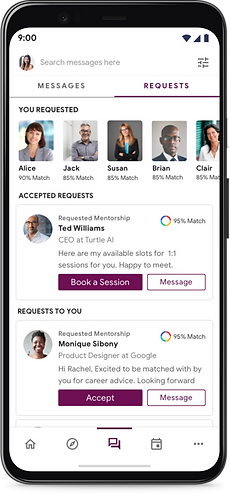
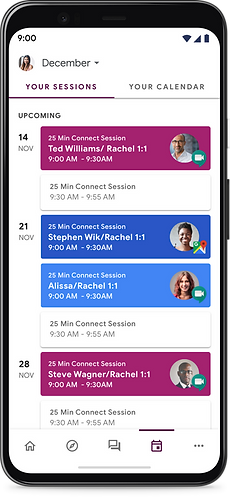
Looks for Mentor Matches
Consider & Connects to Mentor
Gets connected to book a session
Books & Gets ready to meet
1: 1 Starter Conversation
Solution Overview
Google Connect is a one stop place for making connections and getting guidance needed for startup and professional growth. It instantly matches users to mentors, investors, programs, accelerators, competitions based on the users profiles, preferences and browsing behavior over time.
In return it gives mentors on the platform various opportunities, a peace of mind and a place to shine doing what they do best - giving back.
They get redeemed, rewarded and recognized at each step.
Overview of end-to-end Experience
Mentee Side after onboarding.
Overview of end-to-end Experience
Mentor Side after onboarding.
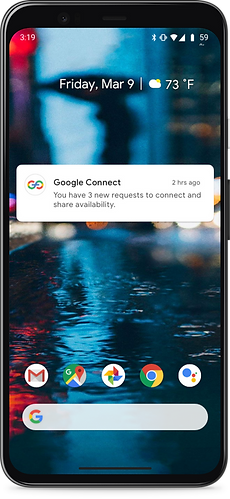
Gets Notification for Requests

Reviews Mentee Requests
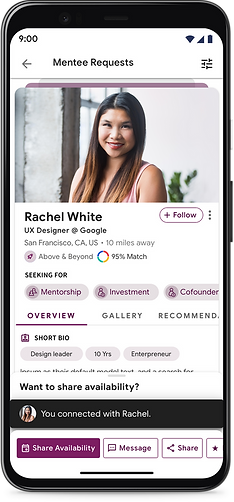
Connects & Share Availability
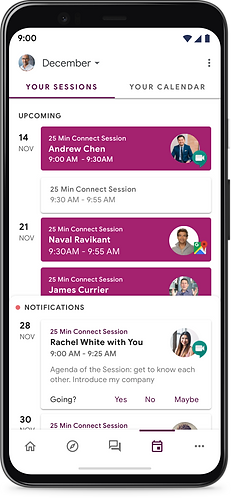
Gets Booking Requests
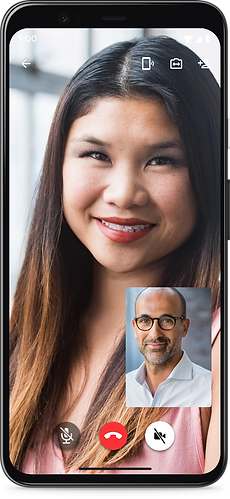
Meets the Mentee
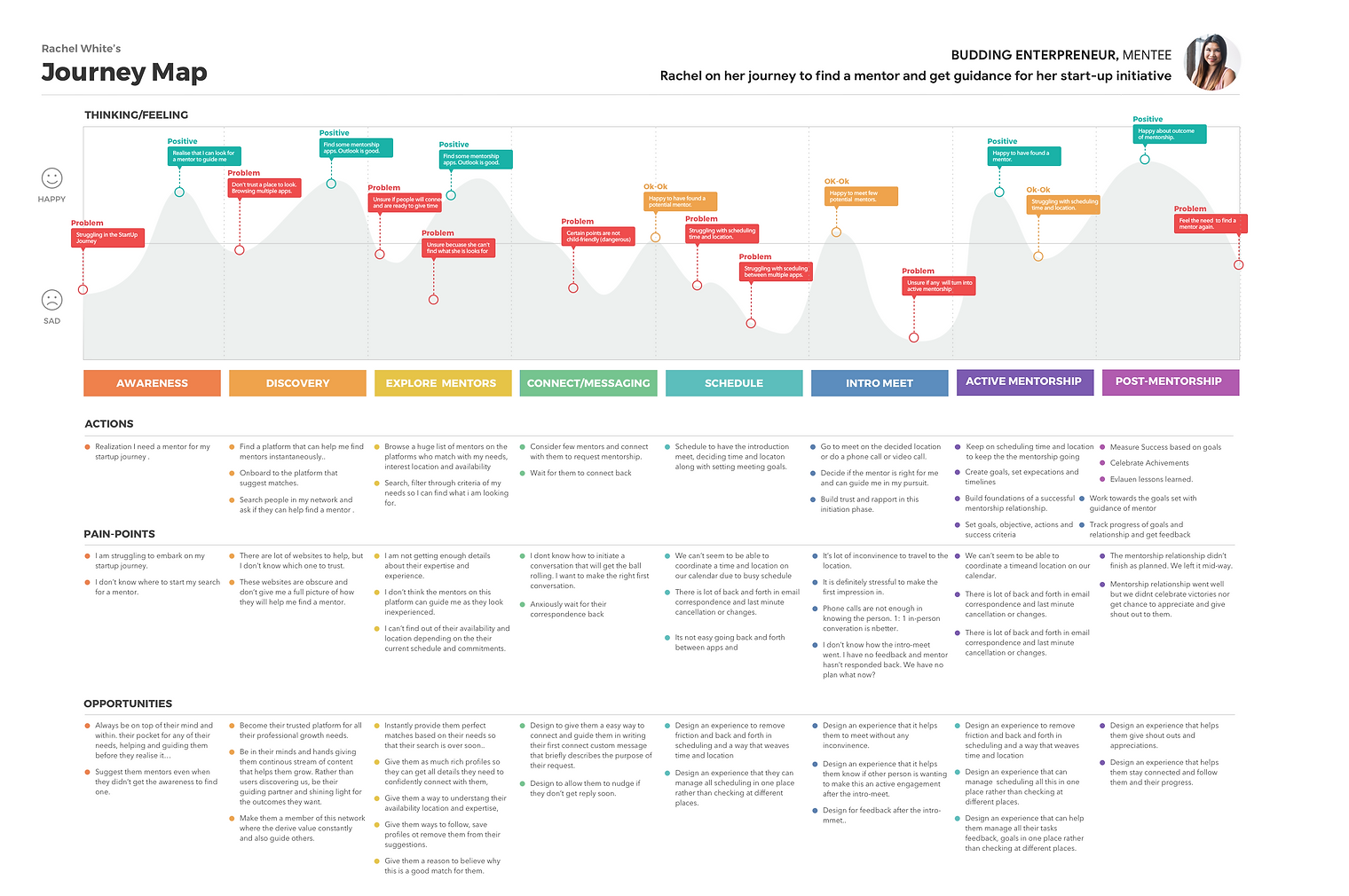
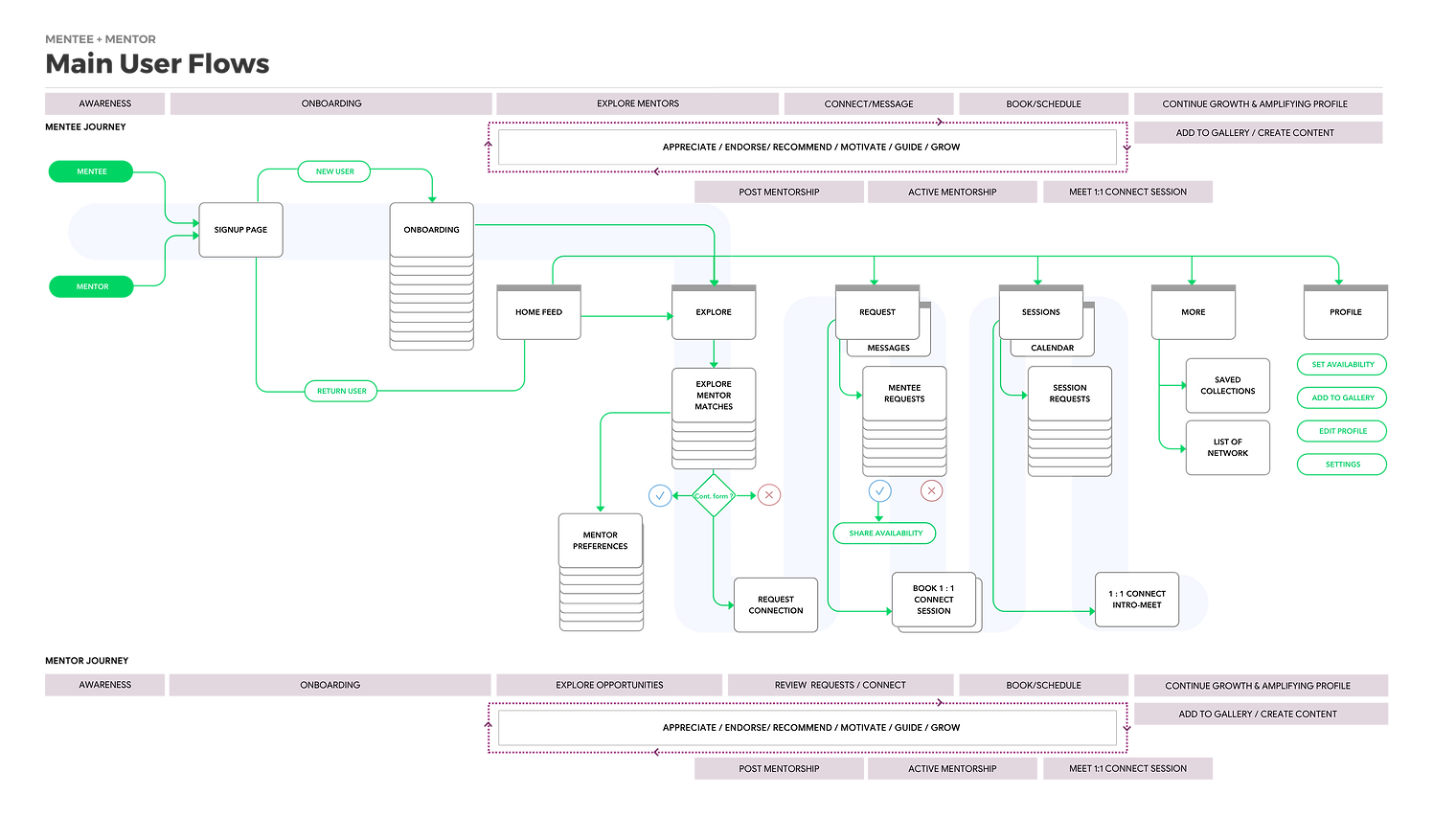
EXPLORE TAB
Explore Tab
Google Connect is a one stop place for making connections and getting guidance needed for startup and professional growth. It instantly matches users to mentors, investors, programs, accelerators, competitions based on the users profiles, preferences and browsing behavior over time.
In return it gives mentors on the platform various opportunities, a peace of mind and a place to shine doing what they do best - giving back.
They get redeemed, rewarded and recognized at each step.
Detailed Experience & Design Decisions
ONBOARDING: VALUE> SIGNUP> PROFILE CREATION
How do we power these matches?
The platforms starts with onboarding getting to know the both mentors and mentee profile first through onboarding, also knowing if they are ready to take a role of a mentor or are available for offering any other services. From there Google Connect will matches, along side with preferences that they can set later.
-
Profile Creation for both Mentors & Mentees.
-
Preferences by Mentees
-
Browsing choices over time
Fast and easy onboarding is a key to get more activation, yet we will need a good amount of initial data to create rich user-generated profiles. I choose a healthy balance of steps so as to optimize for activation and good profile creation, although we could optimize later with understanding the the funnel drop off.
I made many iterations of the flow and what steps to keep in the onboarding and did decide to remove some steps of data collection considering users could amplify their profiles after the onboarding and get to the experience in lesser steps. I had also considered mentors to be invite and curated list only but opted out of it.
BETTER MATCH FILTERING
Edit Preferences to fuel matching.
Mentees can edit mentor preferences if they are not satisfied with the matches that are shown in the swipe-able cards . Mentees can search professionals by - area of expertise, skills they want to grow in, industry interests, years of experience, level of experience, location and availability. They can even add a personalized text on what advice they need, which is added to their profile, and viewed by only mentors they send request too.
Keywords are matched with mentor profiles and suggested to mentees as recommended matches with a Match Score.
Imagine Rachel who is UX Designer now and wants to become an entrepreneur in a and wants expert knowledge in a specific industry and is looking for specific skills they want to grow in which are different from their profile.
EXPLORE MATCHES> CONSIDER>CONNECT
Personalized Swipe-able Matches & Connect with purpose
As soon as the users on-boards, the users land on "Explore Tab" showing automatically generates matches of people, events, programs they could pursue allowing them to see the value fast.
Users looking for mentors specifically, can quickly tap on the "Mentor Category" & swipe profiles of matched mentors. Mentees can swipe left for those not interested, right for interested, while the Connect Button instantaneously allows them to send custom message with what guidance they are looking and for asking for availability to book a session.
Iteration II: Purpose of Connection
This was an iteration 2 designed as iteration 1 I had not allowed for customised message. After testing with few users, I discovered that they found requests were insignificant when they don't have a purpose of connection mentioned. I also discovered users don't like to share availability at default since they would not be comfortable having people setup time with them without knowing them,
EXPLORE REQUESTS> CONNECT BACK>SHARE AVAILABILITY
Mentee Connect Request to Mentor
Mentor can also vet the potential mentee requests as they are ranked by Match Score and can swipe right to keep them in queue, left to ignore and click Accept CTA to accept connection. Once Mentor matches back, the communication between mentor & mentee opens up
Once connected mentors on the platform can share availability slots . Mentor has total control of whom to share availability on calendar and for how long.
The request message and profile in one viewport also allow for quick vetting process further saving time for mentors to go back and forth.
Mentors can get incoming requests for any of these opportunities - mentorship, cohort mentorship, investment, keynote speaking events allowing them to stay active on the platform and have more incentive.
The platform and people all work with respect, care and shared accountability to help each other guide and grow. This vetting process and more opportunities gives mentors further motivation to give back.
SET AVAILABILITY SLOTS>SCHEDULE & MANAGE TIME
Set availability slots to share
Mentors can set availability slots by integrating Google calendar and can share the availability once they have screened the potential mentee and connected. They can create recurring availability slots for their mentees allowing them to book 1 : 1 session depending on how much time they have committed.
Mentors can choose to display available slots to whom they have connected anytime or choose to show slots only on requests for short duration. On default only when mentors connects to the incoming request and share availability. Once connected and availability shared the potential mentee can click 'book session" button on profiles or within the text message.
PROFILE & AMPLIFYING PROFILE FOR MENTORS/MENTEES
Amplifying the profile
Mentorship from one to another requires that the mentor has expertise and enough experience on the subject matter as opposed to just having same interest. So as to elevate the matching, I conceptualized a leveling system that users can self-input or can request people with whom they have worked. The platform can use this for better matching while users get a rich profile
1 Know it inside out - Expert
2. Feel Knowledgable
3. Feel Comfortable
4. Exploring
I explored few concepts of how to represent this and ran some concept tests with users to understand if they comprehended it well as well to know if this information will be useful to users.
I also designed badges for mentors for mentees to give them a word of appreciation after sessions, mentorship or any engagement which also is displayed on their profile. This continuous small reward keeps mentors incentivized and motivated


